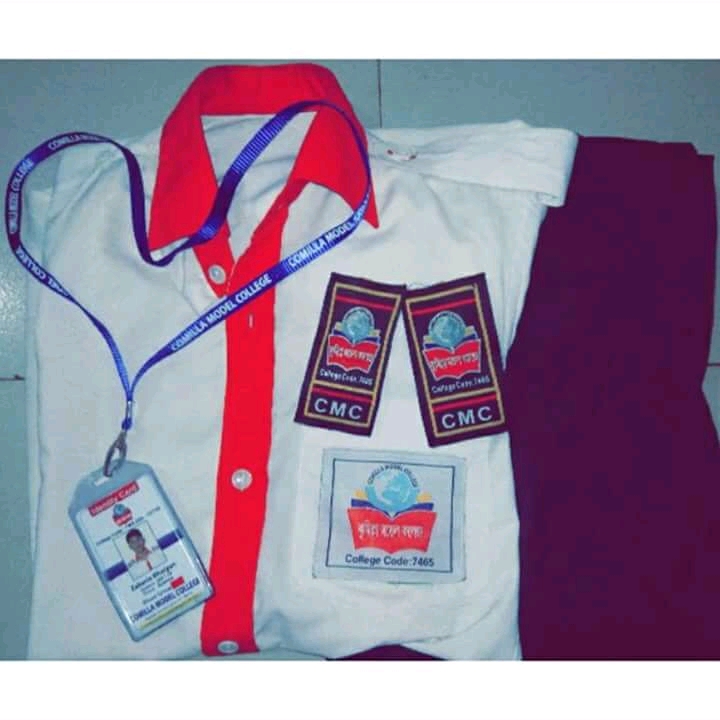Clothing industry in Bangladesh.
Bangladesh
According to the Bangladesh Textile Mills Association statistics, there are currently around 1400 textile mills in the country. About 400 spinning mill A decade ago, most of the Bangladeshi weaving plants used to produce low quality yarn. To meet the requirement of ready made garments, the ability to produce fine quality fine yarn and polyester cotton yarn yarn was very limited. But with the increasing demand of ready made garments industry, this situation has changed a lot in the development of weaving industry especially in the private sector. In 1999, production of 112 million kg gold was able to meet only 22 percent of the total requirement of the country. By 2011, the annual yarn production increased by 11.340 million kg, which is about 90 percent of the country's domestic demand and exportable.
The number of handlooms dropped from 63 thousand in 1983 to 39 thousand in 1999. In 2011, government-owned textile factories reduced by 20 percent. Of these, 21 units of 17 factories were operational, in which 32/1 to 80/1 count yarn was produced. At that time, the process of starting 3 new factories was in progress. In these factories, the total number of Maqur is more than 4.99 thousand. Number of handlooms more than 1 thousand.
The possibility
With the increase in the readymade garments export of Bangladesh, the demand of cotton and cloth is increasing. The domestic demand is increasing rapidly. They are also looking at the garment as they improve the economic condition of the people and increase the income-earning. So, in the field of investment, the textile sector will survive for many years as an exhaustive list. In addition, countries like China, Hong Kong, Vietnam, India etc. have been losing interest in export of ready-made garment as the country's labor wages have increased. Bangladesh is the second-biggest garments exporter in Asia after China. The production of ready made garments in China and other countries is declining. This is positive for the readymade garment sector of Bangladesh. As well as challenges will also increase. Because China is the main source of import and import of cotton. China will want to increase the production of clothes to meet the demand of Bangladesh. The government will have to give more policy and cash assistance to compete with domestic products with the products produced by their own cotton, machinery and technology. Then the textile industry's expansion will be uninterrupted.

History
Textile sector is our country's oldest and oldest potential sector. In the fifteenth century Portuguese merchants spread the trade of Europe with this country. Silk and Muslin textiles are being exported. The Dutch, the French turned around, reached the British East India Company in the eighteenth century. Through this, innovation comes in trade. Although the history of textile is very old in Bangladesh, in the 1930s, the first electricity-driven modern textile industry was established. Composite textile is installed with spinning and weaving facilities. Earlier, handmade loom was the main tool for making garments. During partition in 1947, there were 11 composite textile factories in East Bengal with 11 lakhs of spindle and 27 thousand weaving. At this time, the modern textile industry was composed of various materials like cotton yarn and various utility forms, composted textile factories. Later, this industry is joined with - special clothing weaving, sewing work and hosiery industry, dyeing, printing and finishing. In 1956, the number of spindle increased to 32 lakhs. Later hosiery and dyeing-printing-finishing textiles were established. Greater Dhaka became the center of the art of these industries. Meet the needs of the country. During the War of Liberation, the industrial sector of the country also suffered from the destruction of Pakistani occupation forces. Most of the textile mills were abandoned or closed after independence. In 1972, the number of spindles dropped to 80 thousand. The government of Bangabandhu Sheikh Mujibur Rahman also started the restructuring of the country and also started the industrial sector. By regulating industries, they bring production back to production. There were also several pieces of match. After 1982, state-owned weaving factories were gradually dismantled.
Almost all of the country's general needs are met by government and private production. In the 1980s, Bangladesh has found almost duty-free garment exports under European Union and GSP in the United States. Early cotton, yarn, clothes, buttons, zipper, sewing yarn, machineries - all were imported. In 1993, the European Union gave condition to the use of domestic yarn and clothing in order to provide GSP facility to ready-made garment export. In this, the entrepreneurs are motivated to establish textiles. Because of the inefficient capital expenditures, the export-oriented composite textile establishment gradually expanded. On the other hand, many entrepreneurs set up a net textile industry because of the low-cost capital inferior to setting up the Net Textile industry. A nit cloth is now spread all over the country in Narayanganj. Net garments are now almost equal to the export of oven garments. $ 9.49 billion in fiscal year 2011-12 On the other hand, the revenue from export of Oven Garments has been 960 billion dollars. Apart from Terry Towell, home textiles and specialty textile products have earned $ 105 million in revenue. Since 1995 there has been an average growth rate of about 15 percent per year. A large part of domestic demand is being met from internal production. Along with this, textile industry is expanding.
Net textile and composite textile industries have been growing since the late 1990s. The government then gives 30 percent cash assistance to garment exporters. Export-oriented textile industrymen also provide cash assistance. Cotton and machinery imports duty-free. Many of the raw materials, including cotton, have the duty-free import facilities still in place. The government provides capital at a lower interest than domestic and foreign sources. Due to its high potential, rapid investment in the textile sector has increased. This movement is still in progress. At the same time, the present government introduced nearly 10 closed mills in the public sector. Take initiatives to make mills profitable. In the garment sector, the expansion of the rear industrial sector has also expanded to the advancement industry, such as buttons, zipper, packaging. Almost all of the ready-made linkage products are now being filled with domestic production. As a result of the expansion of the forerunners and the backward industry, now 90 percent of the costumes are being added to the country. As a result, almost all of the export earnings are leaving the country. Oven attire has improved about 40 percent of the local main addition. In addition to the domestic production of last year, about $ 6 billion was imported in the ready-made garment sector. Although the country's textile sector, Denim, has exported about $ 2 billion in various categories of clothing. Textile sector, especially in the composite textile sector, will need to put more composite textile mills to meet this huge demand through internal production.

Textile industry in Bangladesh
The products produced in the modern weaving industry are sari, dhuti, lungi, blouse, shirt cloth, drill, long talk, poplin, salus, gray US cotton cloth etc. The condition of this industry was a decade ago because of poor quality of production. In 1999, the production of 2.5 million mt of garment was not able to meet 1 percent of the domestic demand. But in the first decade of the 21st century, the development of textile industry has changed a lot in the private sector. In 2011, the primary textile sector was able to meet 51 percent of the total export demand.
Combined specialized textile sub-branch of 10 to 50 handlooms was started in the mid-1970s. In this sector, in 1976, there were eight thousand looms with annual production capacity of 15.6 million meters. In 1983, the number of such weavers stood at 11,500. In the years 1983-89, the annual growth rate of this sector declined slightly. Most cotton, polyester and cotton polyester blend fabrics in this sub-branch The main manufactured fabrics are Nylon sari, linen used for home use, screen cloth, shirt cloth, suit clothes, mosquito nets, velvet, hanging screen cloth. Knitting and hosiery enterprises, with 3,000 calls in 1952 and 1562 in 1976, met the domestic demand. Only after 1980, the products produced in this branch are equal to entering the export market. In the domestic market, satisfactory annual growth in equipment capability (around 5.3 percent in 1976-83 years) was not retained and it was only 2.1 percent during 1983-99. At this time, 1390 circular knitting machines were added to the capability to meet export demand. The main products of this branch were garments, underwear, T-shirts, polo shirts, women's underwear, socks, necklaces and sweaters. But since then, the situation has gradually started to change in the development of textile industry in the private sector. During the period 1956-76, modern dyeing facilities were limited in composite factories and traditional hand-operated weavers were working in traditional manner. After 1976, automatic and semi-automatic dyeing, printing and finishing facilities were established in the private sector. During the 1976-83 period, the annual increase of half automatic dyeing and finishing machines was 17.4% and only 1.9% in 1983-99. Automatic dyeing and finishing devices were 6.3 and 7.7 percent respectively in those two periods. In 2011, 310 printing printing and finishing factories stood at 280 million meters. Outside, dyeing work is done in 2800 knitting or knitting factories. Out of which two thousand factories meet local market demand and 800 industries are export oriented. The production of these factories is 410 million meters. Hand-drawn weavers still have a hand painted hand. In 1977, Bangladesh made garment industry entered the export market. Export of ready-made garments in the last two decades has increased sharply. But the garment sector for the rational export market had to depend on importing 85 percent of the textile and 40 percent of the yarn required a decade ago. But due to the development of textiles, the primary sector contributed 51 percent to the total export sector. According to the 2011 statistics, the local textile sector meets 40 percent of the demand for ready made garments or oven garments. Locally produced yarn and cloth to meet the demand of more than 95 percent of the costumes or knitted garments. Annual yarn production in the public and private garment factories is 134 million kg, which meets 90 percent demand of yarn and cloth in the local market. Most of the demand in the export sector also meets. In the last two decades, the demand for yarn and cloth has increased greatly due to the production of ready made garments and 77 percent of the country's total exports. In order to cope with this great demand, the textile sector has been developed mainly in the private sector. In 2011, 1266 factories in the private sector supported the basically prepared garments sector through textile as well as equality to meet the demand of 90 percent of local market clothing. The factories in these factories are more concerned with the production of cotton yarn and the fabric factories. According to BTMA's 2011 estimation of private textile factories, there are 361 number of domestic production factories in the country. The number of factories that produce clothes from yarn are 682, and the number of printing, printing and finishing factories that work to paint and print yarn or cloth are 310. Of which, fully automated or machine-managed 130.
Hope Bangladesh will improve day-to-day garments industry.
this is an very important sector in Bangladesh...it will take a very good future for our country..tax taken from this sector is very much needed for our developement..
you are right brother.
We are slowly going down from this industry. The government will have to take a firm initiative in this regard. very useful post, keep it up and keep me in your mind.